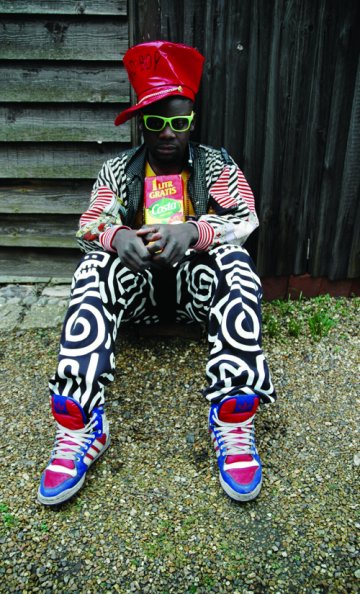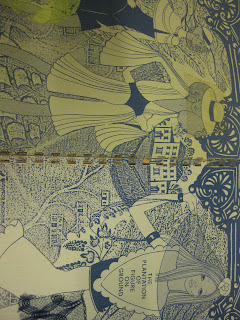
This new exhibition explores and examines the fusion between contemporary fashion and global sportswear brands and their inspiration with all things street style. There is a collection of over 60 outfits from a wide range of designers who have playfully and creatively incorporated high-end fashion into sportswear. There is a strong focus on customization, trying to break and blur the boundaries between what is classed as traditional sportswear and fashion wear, and where these different categories begin and end. As well as work by fashion designers such as Stella McCartney, who have designed sportswear ranges, there are also examples of how sportswear has influenced Japanese high-end fashion designers.

The two areas looked at in the exhibition - fashion wear and sportswear do have different philosophies behind them. Where as sportswear is mostly designed to allow the body to move, and be at its fastest and most able, fashion can sometimes be restrictive. This can be shown in a very obvious example that athletes would choose to wear flat trainers over high heeled shoes, but I think what the exhibition is trying to show is that the trainers need not be any less stylish then shoes you would find in a fashion boutique. As well as just the aesthetics of the clothing, technology is a key aspect and as the V&A explains, 'function and high performance are of primary concern in the design of sportswear'. Whilst some fashion garments may be tight, uncomfortable, slow you down etc, in sportswear the priority is on producing performance-enhancing garments and footwear that coincides with the way your body works. Traditionally sportswear tends to be streamline, and follows the natural curves and shapes of the human body. In contrast fashion is all about concealing, revealing, distorting and exploring how new shapes can be explored in place of the standard human form. Whereas high fashion may only relate and be available to a selected group of people i.e. in terms of wealth, gender, age, body type and shape, sportswear is much more universally affordable. It is comfortable, not as pretentious, cheaper, and doesn't require you to look like a supermodel to pull it off.

'The democratisation of beauty' (text reference Susie Orbach) -
The idea of beauty expanded, broader definitions of how women's physical beauty is visually represented. 'In attempting to democratize and make accessible to all the idea of beauty, women are eager to see a redefinition and expansion of the ideals, along the lines they see it and away from the limiting, narrowed and restricted body shapes and sizes we see in moving images and print'. - from Dove beauty report.
In a way body shape is a form of production in what is classed as the 'ideal' body shape. This is represented in different ways due to gender, culture and general beliefs. However with the influence of high fashion and the media in my generation we are surrounded by images of the 'ideal' female form being tall, thin, curves in the right places and generally glossy and perfect. With the 'ideal' form being projected onto us on a daily basis it is difficult to start to consider if any other shape is acceptable. However, depending on how easily influenced you are this determines how much these ideals will affect you.
Fashion affects the female silhouette in different ways; on one hand you can look at it again with the idea of the 'ideal' female form and this image we all dream to achieve. But, on the other hand, fashion is not just form those with model figures, and the catwalk is just a starting point for how fashion is gradually distilled down to us, the general public. A huge part of fashion is also about playfully distorting the female silhouette, shoes to make us taller, belts to make us appear thinner, trousers to make our legs longer, shoulder pads to make us broader. This is one of the few ways left that designers rely on to still keep fashion fresh and new, mixing up the traditional shapes and proportions. In addition for the average female figure, these manipulations of the female form created by fashion help to highlight the best parts of our bodies, and hide the worst.
Sportswear affects the female silhouette in a different way - for example the 'ideal' body type here is more toned, not as thin, strong and powerful as opposed to fashion's waif like appearance. Sportswear tends to be more streamline and follow the natural shape of the form. Excess fabric and weight are only going to slow you down, and comfort is key. It is also about protection - from dangerous sports, weather conditions, or anything that could potentially harm you. Sportswear needs to be able to work in a variety of different situations, and tends to not be designed for one particular area exclusively.
Customisation was a key aspect to the exhibition, which allows individuality to be expressed through subtle differences and modifications. Homemade street adaptations - such as how laces are tied and adorned, or how tracksuits are worn - have inspired designers to reinterpret trainers and the tracksuit. As well as the shapes and styles being reformed and reinterpreted, pattern and colour is exaggerated in a highly playful way. Cultural influences are shown through this new era of sportswear, for example merging the idea of Native American moccasins with modern sneakers. There is nothing too serious about this new style of sportswear, it is fun, bright, individual, witty and ironic.


















